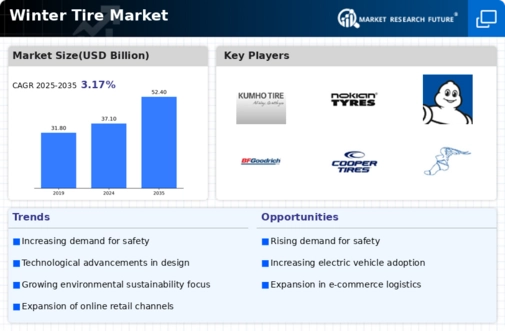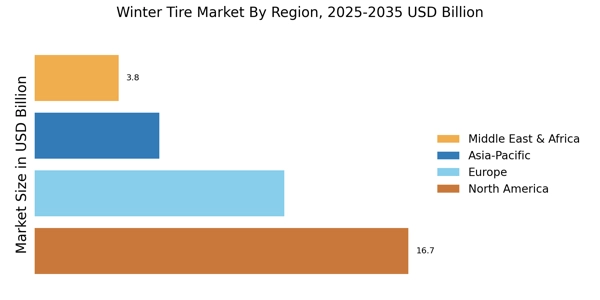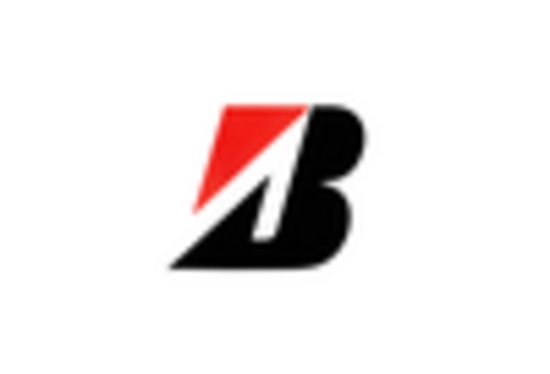Increased Focus on Sustainability
The Winter Tire Market is increasingly focusing on sustainability and eco-friendly practices. Consumers are becoming more environmentally conscious, prompting manufacturers to develop tires that are made from sustainable materials and are recyclable. Innovations such as bio-based rubber and reduced rolling resistance are gaining traction, as they contribute to lower carbon emissions. Recent studies show that eco-friendly winter tires are projected to capture a 30% market share by 2027. This shift towards sustainability not only aligns with consumer values but also positions the Winter Tire Market favorably in a competitive landscape, as companies that prioritize eco-friendly practices may gain a significant advantage.
Rising Demand for All-Weather Tires
The Winter Tire Market is witnessing a rising demand for all-weather tires, which offer versatility for consumers who may not want to switch between summer and winter tires. These tires are designed to perform adequately in both winter and summer conditions, appealing to a broader audience. Market data suggests that sales of all-weather tires have increased by approximately 25% in the last year, as consumers seek convenience and cost-effectiveness. This trend indicates a shift in consumer preferences, which could reshape the Winter Tire Market. Manufacturers are likely to respond by enhancing the performance characteristics of all-weather tires, thereby influencing the overall market dynamics.
Regulatory Standards and Safety Requirements
The Winter Tire Market is significantly influenced by regulatory standards and safety requirements imposed by various governments. Many regions have enacted laws mandating the use of winter tires during specific months or under certain weather conditions. For instance, countries in Europe have stringent regulations that require winter tires to meet specific performance criteria. This regulatory environment not only drives demand but also encourages manufacturers to innovate and improve their products. Data indicates that regions with strict winter tire regulations have seen a 20% increase in winter tire sales over the past few years. As safety becomes a priority for consumers, the Winter Tire Market is expected to grow in response to these regulations.
Technological Innovations in Tire Manufacturing
The Winter Tire Market is experiencing a surge in technological innovations that enhance tire performance and safety. Advanced materials, such as silica and specialized rubber compounds, are being utilized to improve grip on icy surfaces. Additionally, the integration of smart technology, such as sensors that monitor tire pressure and temperature, is becoming more prevalent. These innovations not only increase the safety of winter tires but also extend their lifespan. According to recent data, the adoption of these technologies has led to a 15% increase in consumer preference for high-performance winter tires. As manufacturers continue to invest in research and development, the Winter Tire Market is likely to see further advancements that could redefine consumer expectations.
Changing Climate Patterns and Weather Conditions
The Winter Tire Market is being shaped by changing climate patterns and unpredictable weather conditions. As winters become more severe in certain regions, the demand for high-quality winter tires is likely to increase. Data indicates that areas experiencing heavier snowfall and colder temperatures are seeing a 40% rise in winter tire purchases. This trend suggests that consumers are becoming more proactive in ensuring their safety during adverse weather conditions. Manufacturers are responding by enhancing tire designs to better cope with extreme winter conditions. Consequently, the Winter Tire Market is expected to expand as consumers prioritize safety and performance in their tire choices.


















Leave a Comment